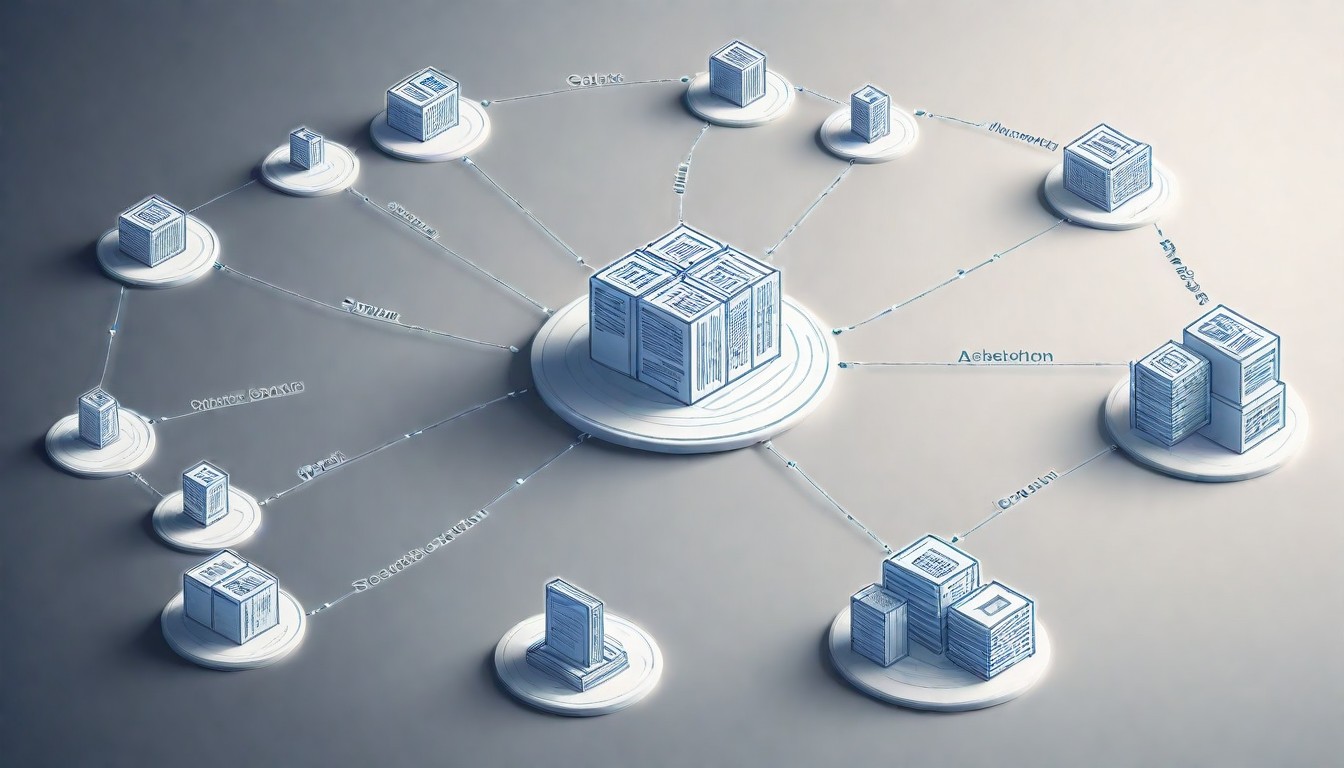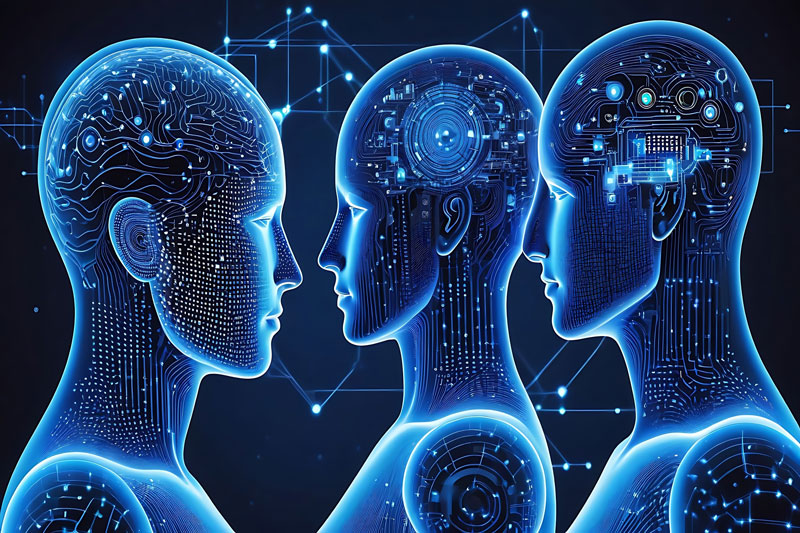The human brain, with its intricate web of neurons and synapses, has long fascinated scientists and researchers. How does it store memories, learn new information, and adapt to its surroundings? One theory that has captivated the minds of neuroscientists for decades is Hebbian learning, a concept that provides profound insights into the fundamental principles of neural plasticity.
Imagine a symphony of neurons firing and wiring together in response to experiences, forming the foundation of our thoughts, behaviors, and memories. Hebbian learning proposes that “cells that fire together, wire together,” suggesting that when two neurons are repeatedly activated simultaneously, the connection between them strengthens. In other words, it’s a biological manifestation of the phrase “practice makes perfect.”
In this exploration of Hebbian learning, we embark on a journey into the inner workings of the brain, delving into the mechanisms that underpin the formation of memories, the acquisition of new skills, and the adaptation to a changing world. We’ll unravel the historical roots of Hebbian theory, tracing its origins to the groundbreaking work of Canadian psychologist Donald Hebb in the mid-20th century.
As we venture deeper, we’ll discover how Hebbian learning serves as a foundational concept not only in neuroscience but also in artificial intelligence and machine learning. It has inspired algorithms and models that mimic the brain’s ability to recognize patterns and adapt to new information, paving the way for advancements in fields as diverse as robotics, speech recognition, and recommendation systems.
Join us as we uncover the elegant simplicity and profound implications of Hebbian learning. Through a blend of historical insights, real-world applications, and cutting-edge research, we’ll journey into the heart of the brain’s remarkable capacity to learn, adapt, and evolve.
Relu Activation Function in Torch & Keras | Code with Explanation
Working With Deepcluster For Video or Image Clustering
LLM Machine Learning Meaning , Uses and Pros & Cons
you may be interested in the above articles in irabrod.
What is Hebbian Learning Rule
The Hebbian learning rule is a principle in neuroscience that describes how synaptic connections between neurons can be strengthened based on their activity. It’s often summarized by the phrase “cells that fire together, wire together.” The rule was first proposed by Canadian psychologist Donald Hebb in his 1949 book “The Organization of Behavior.”
Here’s a simplified explanation of the Hebbian learning rule:
- Neurons That Fire Together: When two neurons on either side of a synapse (the junction between two neurons) are activated simultaneously, meaning one neuron sends a signal and the other receives it, the connection between them is strengthened.
- Wiring Together: This strengthening of the synaptic connection makes it more likely that when the first neuron fires, it will trigger the second neuron to fire as well. In essence, the two neurons become more “wired” together.
- Learning and Memory: Hebbian learning is thought to underlie aspects of learning and memory. When we learn something new or remember an experience, it often involves the strengthening of specific neural pathways through this process.
- Adaptation: It also plays a role in how the brain adapts to new information and experiences. If two neurons frequently activate each other, their connection strengthens, allowing for more efficient signaling in response to similar patterns of activation in the future.
- Limitations: While the Hebbian learning rule captures some aspects of synaptic plasticity (the ability of synapses to change in strength), it’s a simplified model and doesn’t account for all aspects of learning and memory in the brain. In reality, various factors, including neuromodulators and feedback mechanisms, contribute to the complexity of synaptic plasticity.
- Biological Basis: The biological basis of Hebbian learning involves mechanisms like long-term potentiation (LTP), which refers to the strengthening of synaptic connections, and long-term depression (LTD), which refers to the weakening of synaptic connections.
In summary, the Hebbian learning rule is a foundational concept in neuroscience that describes how neurons in the brain adapt and form connections based on their activity. It’s a key principle underlying certain aspects of learning, memory, and neural plasticity.

Neural Network
Hebbian Learning Rule Example
Let’s consider a simple example to illustrate the Hebbian learning rule:
Scenario:
Imagine we have two neurons, Neuron A and Neuron B, connected by a synapse. We want to see how the connection between them strengthens based on their activity.
Initial State:
– The synaptic connection between Neuron A and Neuron B is relatively weak.
– Neuron A fires an action potential (sends a signal) toward Neuron B.
Application of the Hebbian Learning Rule:
- Activation: Neuron A fires an action potential, which arrives at Neuron B’s synapse. Neuron B receives this signal.
- Strengthening Synaptic Connection: According to the Hebbian learning rule, because Neuron A and Neuron B fired together (i.e., Neuron A’s signal arrived at Neuron B and caused it to fire shortly afterward), the synaptic connection between them is strengthened.
- Enhanced Connectivity: As a result of this simultaneous activation, the synapse connecting Neuron A and Neuron B becomes more efficient. It’s now more likely that when Neuron A fires in the future, it will trigger Neuron B to fire as well.
- Repetition: If this pattern of simultaneous activation repeats over time, such as in the case of learning a specific association or pattern, the synaptic connection will continue to strengthen.
- Learning and Memory: This strengthened connection represents a form of learning. It means that when Neuron A fires due to a specific stimulus or input, Neuron B is more likely to respond, contributing to the brain’s ability to store and recall information.
It’s important to note that this is a simplified example, and in the real brain, synaptic plasticity is influenced by a wide range of factors, including neuromodulators and feedback mechanisms. However, this scenario captures the basic idea of how the Hebbian learning rule operates: neurons that fire together strengthen their connections.

Hebbian Learning Neural Networks
Hebbian Learning Neural Networks
Hebbian learning, initially proposed by Canadian psychologist Donald Hebb in his 1949 book “The Organization of Behavior,” is a foundational concept in neural network theory and plays a crucial role in understanding synaptic plasticity and learning in biological neural networks. In the context of neural networks, Hebbian learning refers to a learning rule that strengthens the connections (synapses) between neurons based on their activity patterns. This rule is often summarized as “neurons that fire together, wire together.”
Here’s how Hebbian learning works in the context of neural networks:
- Neural Connections: Consider a simplified neural network with two connected neurons, Neuron A and Neuron B, and a synapse connecting them. In artificial neural networks, these connections are represented by weights.
- Activation: When Neuron A activates (fires), it sends a signal to Neuron B through the synapse.
- Strengthening Synaptic Weight**: If Neuron A’s activation is followed by the activation of Neuron B, the synaptic weight (connection strength) between them is strengthened. In other words, if Neuron A’s output contributes to Neuron B’s activation, the connection from A to B becomes more potent.
- Weakening Non-Coactive Connections: Conversely, if Neuron A’s activation is not followed by Neuron B’s activation, the synaptic weight remains unchanged or may weaken over time. This principle encourages the network to strengthen connections that contribute to a meaningful response.
- Learning and Memory Formation: Over multiple iterations, as neurons continue to fire together or not, the neural network “learns” patterns and associations in the data it is exposed to. Stronger synaptic connections represent learned information, which can be thought of as memories or knowledge stored within the network.
It’s essential to note that while Hebbian learning is a foundational concept, biological neural networks are far more complex than this simple rule suggests. Real neurons and synapses are subject to various neuromodulators, feedback mechanisms, and other forms of plasticity that influence learning and memory. In artificial neural networks, Hebbian learning can be used as a starting point for unsupervised learning algorithms and for training models to recognize patterns in data.
Conclusion
In conclusion, Hebbian learning is a fundamental concept in neuroscience and artificial neural network theory. It provides a simple yet powerful explanation for how neurons strengthen their connections based on the coactivity of neural elements. The principle of “neurons that fire together, wire together” underlies the formation of associations, learning, and memory in both biological and artificial neural networks.
Hebbian learning has significantly contributed to our understanding of synaptic plasticity, which is the brain’s ability to adapt and reorganize itself in response to experiences and learning. While Hebbian learning offers a foundational framework, it’s important to recognize that real neural networks are incredibly complex, and additional factors such as neuromodulators and feedback mechanisms play crucial roles in learning and memory.
In the realm of artificial intelligence and machine learning, Hebbian learning has inspired unsupervised learning algorithms and neural network architectures that can autonomously discover patterns and associations in data. It serves as a reminder that the principles of neural plasticity observed in biology can inform the development of intelligent algorithms capable of learning from their environments and adapting to new information.
In summary, Hebbian learning provides valuable insights into the mechanisms of learning and memory in both biological and artificial systems, laying the foundation for further exploration and innovation in the field of neural networks and cognitive science.







